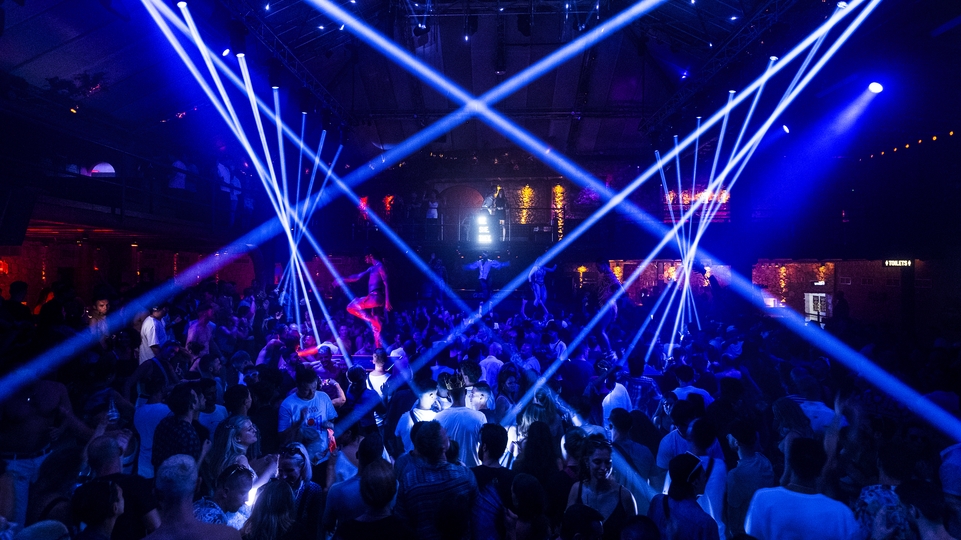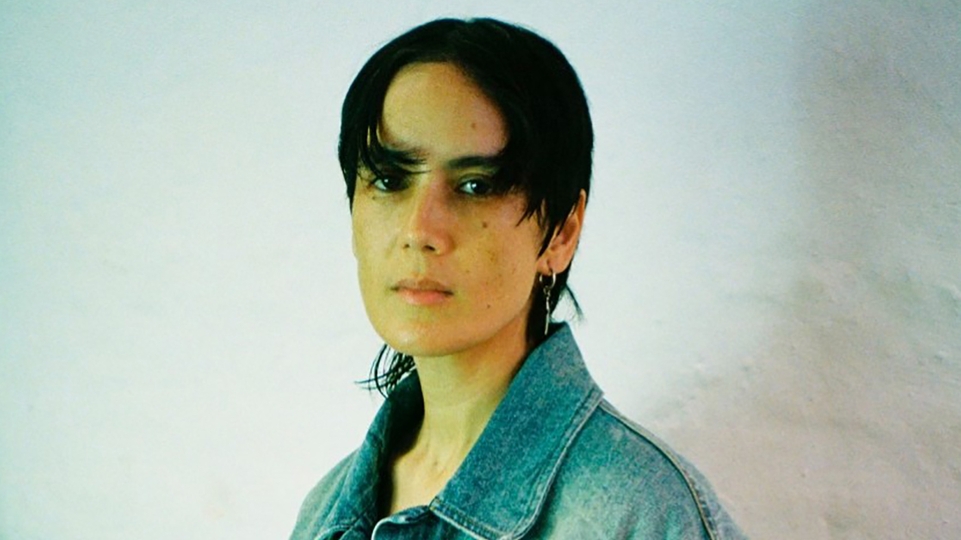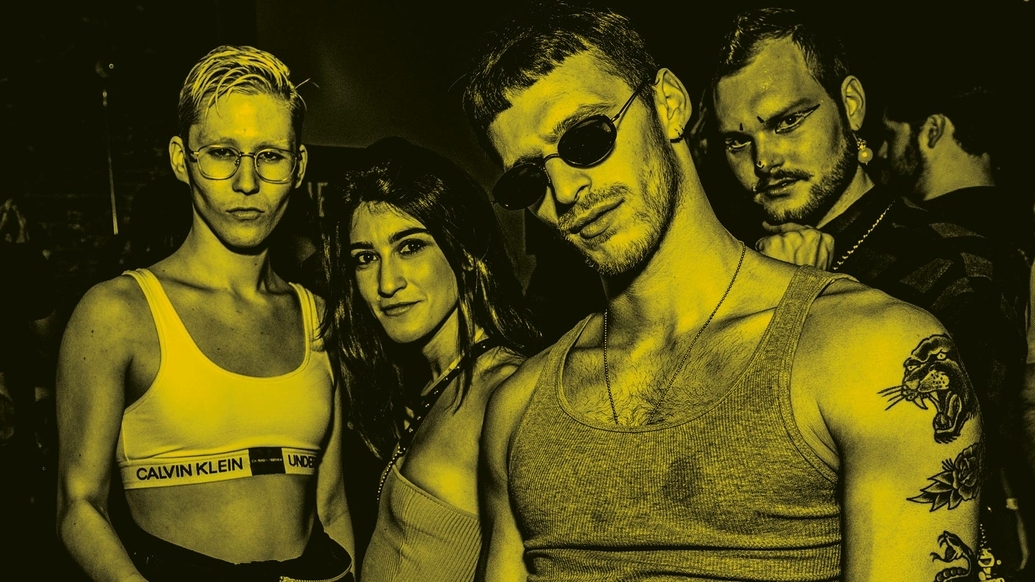
He.She.They is the progressive party series promoting diversity in the world's biggest clubs
He.She.They is a globetrotting party devised by Steven Braines and Sophia Kearney, aiming to bring together ravers of all genders, sexualities and ethnicities. DJ Mag joined them in New York to find out more...
Steven Braines and Sophia Kearney of The Weird & The Wonderful are perhaps one of the most admirable success stories in the music industry. As well as running a globally established artist management company with a roster that includes Maya Jane Coles, KDA and DJ Deeon, over the past year, they’ve put new ideas into practice exceptionally fast with a party that’s already gaining momentum in some of the world’s most important clubbing cities.
He.She.They’s tagline is simple but powerful: to create, “a place without prejudice for people to be people”. They’ve been working on free-spirited, open-minded parties, creating a safe space for everyone to coexist regardless of background, age, race or sexual orientation, all the while programming some of the strongest DJ line-ups out there right now. The name itself, He.She.They, is a direct appreciation of equality for binary and non-binary clubbers alike. Since launching at Ministry Of Sound last February, they’ve taken over Watergate in Berlin, Pacha in Ibiza and Opium Club in Dublin, with Rex in Paris and De Marktkantine in Amsterdam to follow. It’s clear that the industry has embraced the concept with open arms.
DJ Mag has gone to New York for one of their biggest events to date — a collaboration with promoters Teksuppport, taking the concept to the 99 Scott warehouse in Brooklyn. “We wanted to change the paradigm to show that you can have nights where everyone who is open-minded can feel welcome, and those parties don’t have to be boring, they can be brave. Safe doesn’t mean overly sanitised,” Steven Braines says. We’re sat in the bustling, all-American Kellogg’s Diner on Metropolitan Ave in Williamsburg the day before the gig, at a relatively cosy booth by the window.
“We found a big tendency that many house and techno nights constantly just programme all male DJ lineups (usually CIS and white) with exclusively female dancers, and even in queer parties (again usually CIS and white), all male DJ line-ups with male dancers.” He takes a sip of his cola refill. “It just seemed odd to us, given our friendship group and society in general, that too often, womxn, people of colour and a whole host of intersectional people had zero visual representation, and sometimes weren’t even part of the conversation. We have always booked talent first, and it’s never a box-ticking exercise... in New York, for example, all the DJs happen to be womxn of various sexualities and racial backgrounds, and our hosts also come from a wide variety of genders, sexualities, body shapes and racial backgrounds."
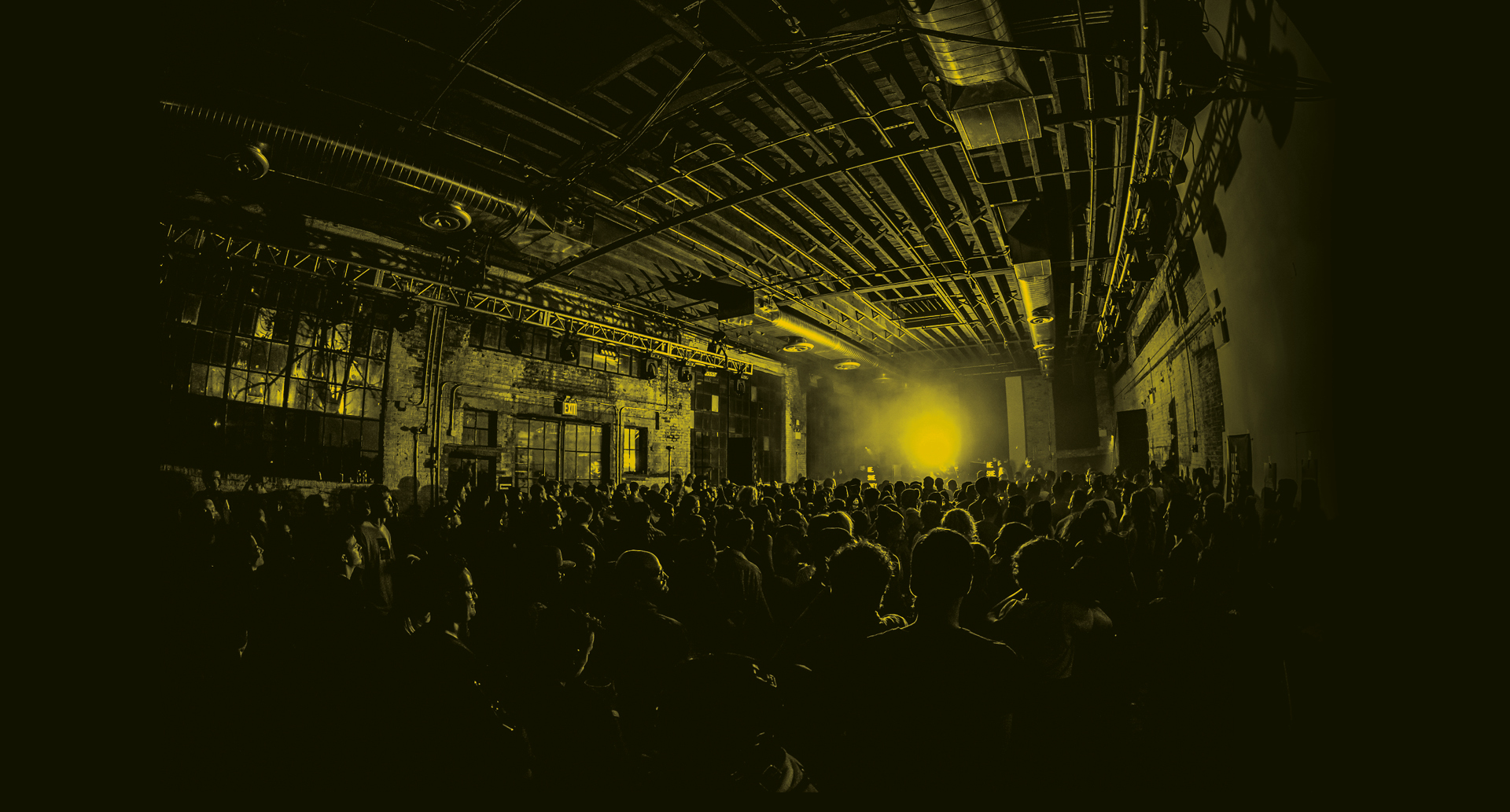
New York has always been culturally diverse, and with one of the biggest LGBTQIA+ communities in the USA, there were movements way before the 1980s, when voguing was in fashion and crossed into the mainstream. Queer storylines were breaking onto Broadway in the 1920s, and there’s Manhattan’s iconic gay club Stonewall Inn, where the legendary protests took place after police raids in ’69. One of the most prolific NYC parties in the mid ’80s/early ’90s was Limelight. Set in the gothic former Church Of The Holy Communion, it embodied a queer alternative subculture, throwing hedonistic techno raves with an anything-goes policy. Goths could dance alongside glamorous drag queens and locals from Staten Island. It was a truly decadent institution, a place where the infamous Club Kids ran wild.
Then there were fearless underground parties such as The Spectrum in East Williamsburg in 2011. Fast forward to now, and there’s PAT in Brooklyn, a good-vibes, free-entry club-night, “for anyone from anywhere wearing anything and loving who they want”, running since 2013. It’s parties like this that inspire He.She.They, and allow them to naturally coexist alongside what the New York scene already has to offer, and in the wider spectrum, translate into other cities where it may be lacking. “There were a lot of conversations at Steven’s fl at,” Sophia Kearney says. She’s reminiscing about how it all started over a chocolate milkshake. “We’d be talking about parties we’d been to, or places we’d been touring. About our friends, and our crew, and how different everyone was. We all used to be able to throw these amazing get-togethers, and enjoy each other’s company. Anyone could jump on and DJ, everyone could hang out. People would bring friends into the group and it would expand in a like-minded way. We wanted to bring that vibe and start to push it out.”
EXPERIMENTATION
Sophia and Steven both had a hand at running parties during their younger years, have toured the world with their artists, run stages at festivals, and through their own exposure to clubbing as teenagers, have plenty of experiences to draw from. “The first raves I started going to at 18, like Planet Angel in Vauxhall, it was all about that,” Kearney says. “It was about bringing a friend, and when you got there, you used to meet so many amazing people. I always wanted there to be somewhere you could go and create memories with the people that you were going with, but also where you could make new friends, anyone who you were next to on the dancefloor,” she says.
Steven grew up in Sunderland and has plenty of early memories from Newcastle, the industrial city of around 300,000 where straight and queer culture are integrated and areas such as the Pink Triangle are commonplace. “There was a night at Rock Shots in Newcastle which was an institution,” Braines says. “It was very mixed sexuality-wise. A good mix of men and womxn. Men or womxn who would call themselves straight would go and experiment with their sexuality, but could do so without making a decision, to see what it was like in a very organic way. It wasn’t a thing if you kissed that boy... and that was quite mad, after coming from Sunderland and more of a working-class background. By the time I was 18, I was going to fetish clubs and all sorts.” Experimentation is something that they want to greatly encourage at He.She.They.
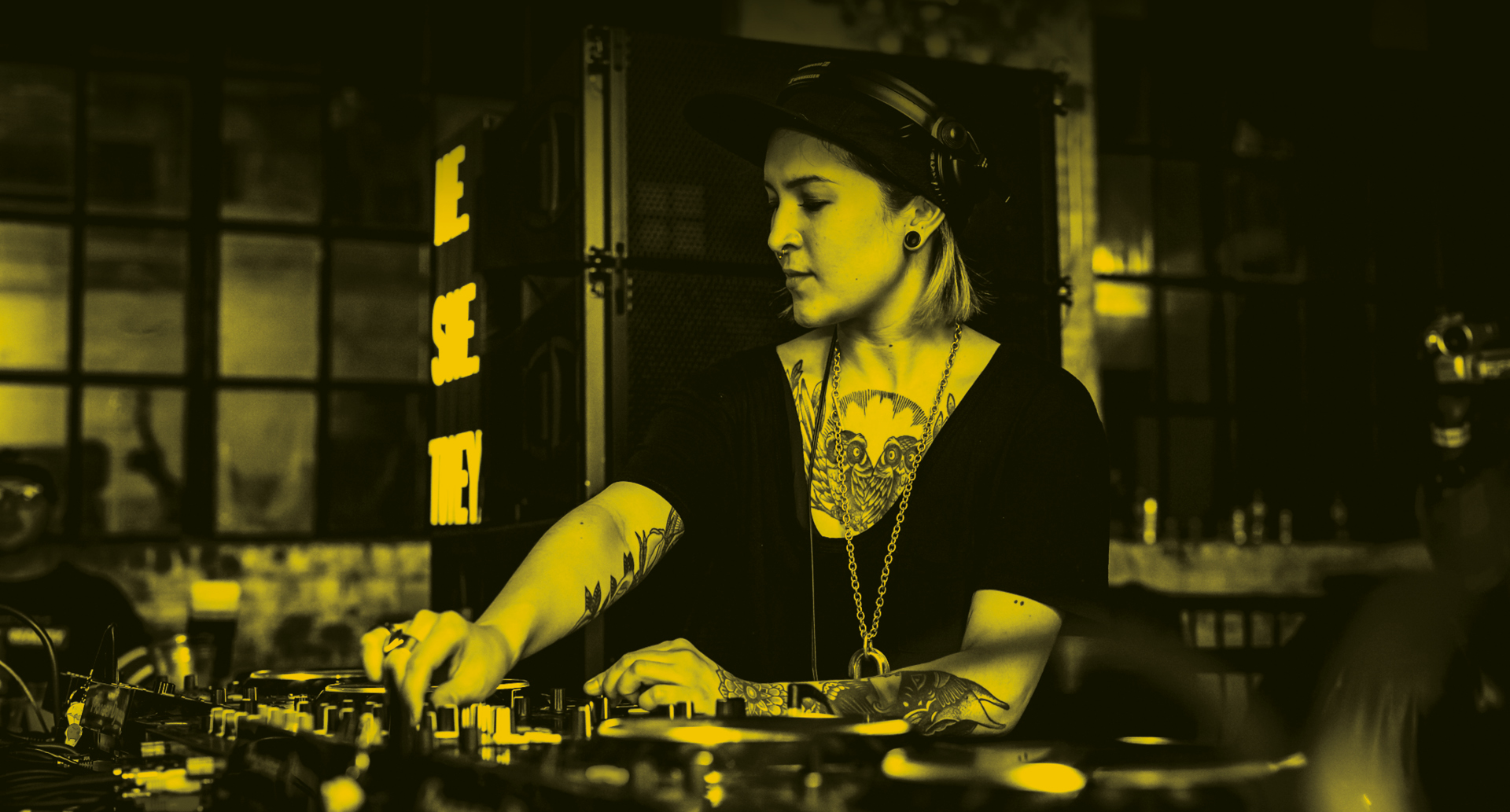
“A lot of people want to experiment, but don’t feel that they have the green light to,” Braines says. “Most people want to do things, but they’re worried about social embarrassment. So if you give them a place of unconditional positive regard, where they can go and be themselves in a non-judgemental, non-prejudiced way, they can experiment, because there’s no backlash to come from it. So they can be extreme. You can wear something and decide it wasn’t for you that week or the next week, or make a mistake, and that’s fi ne. We live in a culture where everyone’s quite scared of making mistakes,” he says.
Whether that means indulging in PVC and latex, a dress for the first time, or simply feeling happiest in jeans and a T-shirt. “Why is it any different if this jumper is made of leather or polyester? What is the difference, it’s a function that covers something. Some people get so freaked out because you’re wearing leather or PVC or whatever, but it’s just a material,” Braines says. Imagine the all-in diversity of Limelight, combined with the extreme dress codes of fetish parties such as London’s Torture Garden, if people wish to dress that way. Throw in some principles from Berghain/Panorama Bar for good measure, and then you’re one step closer to Braines and Kearney’s ideals.
“I can relate to it being a big step,” Kearney says. “When I first went to Torture Garden, and I had to unzip my coat to go in there... it feels scary at first. I was really nervous, because I’m not very confident in my body and I never have been, but when I walked in and I had to put my jacket in the cloakroom, and I could see everyone else around me in way more outthere things than I was, I felt so liberated. So liberated to just walk around and not care, and just enjoy myself. Now the things that I’ve worn and the things that I’ve done, and the photo shoot... they were beyond the realms that I ever thought I could do in my life even only two years ago,” she says.
He.She.They have been delighted by the broad following they’ve built up so far. “There’s been a very varied crowd,” Kearney says. “We were really pleased at the first party we did a year ago at Ministry. There was a couple that both Steven and I saw, and they were in their late 40s/early 50s. The womxn came in a sheer black top with nipple tape, and he was all in chains. They’d just obviously liked that vibe and got it. Even among our friends, people will send me links and go, ‘When’s the next He.She.They? Because I’m going to buy this and I’m going to wear it’. It allows people to be creative in their free time. It can be an extra element that isn’t just about, ‘What DJ am I going to buy a ticket to, or what group of friends am I going to go out with?’ It’s, ‘How am I going to express myself this month?’ And that makes me really happy. “It’s been a journey for me as well,” she continues. “I can’t talk the talk and not walk the walk. So the boundaries I’ve had to push for myself with my selfconfidence, in terms of what I’m ok with wearing, has been really challenging. I’ve been so nerve-wracked in the toilets at Ministry, getting ready to walk into a venue when I know that I need to be one of the people that is setting the example.” They’ve put parties on in some clubs that are traditionally straight and made them accessible to the queer community, sometimes for the first time. He.She.They implemented unisex toilets at Ministry Of Sound.
CROSS-SECTION
The music programming is of course paramount, and something very important to Braines and Kearney, who both have over 20 years’ experience in the music industry. The artists on the line-ups have been a cross section of headliners, from their very own Maya Jane Coles to Marshall Jefferson, Honey Dijon and Miss Kittin, to nurturing new talent like residents Wax Wings and Maze&Masters. “He.She.They set the tone from the very first party a year ago,” Joseph Icaro, aka Wax Wings, tells DJ Mag of his Ministry Of Sound debut. “Imagine a rainbow of different shaped and sized bodies dancing in sync to the message of inclusivity and acceptance. Lewis G Burton parts the dancefloor with an entourage of Polish performers punching the ceiling and twirling in huge gowns, while Jim Warboy and I decide on our finale track. Peaches’ ‘Fuck The Pain Away’ it was, and with that out of the way, I left the booth and joined a half-naked slosh of dancers, including Steven Braines and Sophia Kearney on the stage. It really was the only way to start this beautiful journey: sweaty, the two geniuses behind this party looking out over so many different creeds all in it together.”
Verity, digital manager of The Weird & The Wonderful and one half of Maze&Masters, wholeheartedly agrees. “The atmosphere is something special,” she says, “seeing the craziest mix of people on the dancefloor, bringing together all these different subcultures and shaking them up with furious music into a distinctive authentic energy. We think everyone goes away inspired to live their truth, however that may manifest.” The booking policy is based on talent, and artists that they believe fit in with their ethos. “We’ve kind of established a community,” Braines says.
For their inaugural NYC party Maya Jane Coles, Heidi, Kim Ann Foxman and Lauren Flax are on the bill — all of which are globally recognised artists in their own right. “We love a warehouse space, and we’ve always been big fans of New York,” Kearney says. “It was about which promoter in this territory was going to stick their hand up and say, ‘We completely understand where you’re coming from on the inclusivity and on the diversity’. It’s an all-female line-up at this party, with a really diverse range of hosts. There would have been a lot of other promoters that may well have been scared of that. Teksupport putting us in 99 Scott were not afraid of that. Breaking a new brand and breaking a new city, especially somewhere like here, it’s not super-easy, but we want to build longstanding relationships with the promoters, who have initially believed in us.”
On walking into the venue, it immediately screams old school warehouse vibes. The space is impressive. It can hold up to 3,000 capacity, but the DJ booth still feels in intimate proximity to the crowd. There’s low-slung red and yellow lighting, with the occasional strobe across the dancefloor; He.She.They’s now staple theme for all their shows worldwide. Lauren Flax played their first party in Berlin, and this gig is particularly significant for her, as it’s in her hometown. “I’ve lived in this city for 16 years now,” Flax says, “and I’ve seen many iterations. In terms of legal venues, it’s really come back to life within the last four years or so. The beautiful thing about these venues, like Elsewhere, Good Room and Nowadays, is they are all very vocal about inclusivity, and have zero tolerance for anything homophobic, transphobic or any type of discrimination. The underground venues, like The Spectrum/Dreamhouse for example, were always the safe space for us queers, and it went without saying that we protect each other in these spaces. To have these wonderful legal venues follow suit has been pretty major. He.She.They at 99 Scott is a perfect example of that as well.” Kim Ann Foxman is another city native with a set of New York house, plenty of acid, and classics such as CJ Bolland’s ‘Camargue’. “I think it’s great to celebrate inclusivity for all across the gender spectrum,” Foxman says.
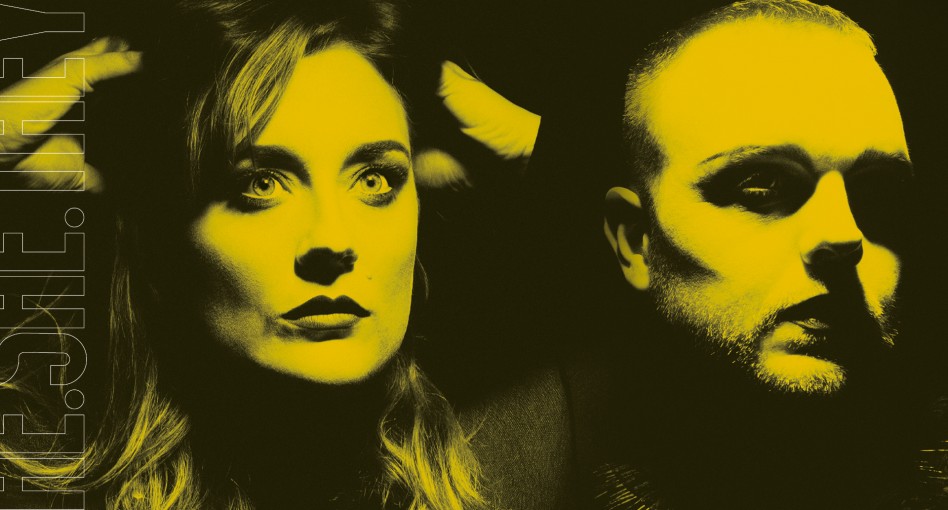
“This kind of night is exactly what the dance/electronic community has needed for a long time”
One of the most integral artists to the family is Maya Jane Coles. “It’s been fantastic being a resident at what I feel is one of the most important and exciting new nights in the current club world,” Maya says. “Watching He.She.They grow so rapidly in such a short space of time, and seeing the effort put in by the team, has been inspiring. This kind of night is exactly what the dance/ electronic community has needed for a long time. In the past, I’ve often felt like the queer scene has lacked parties that embrace the darker side of dance/electronic music, and the underground dance scene has generally lacked parties that truly embrace queer culture. I love that He.She.They is a safe space for anyone who thinks outside of the box, and a place that welcomes people to their creativity, which I feel like the rave scene has slightly lost over recent years.
“The different crowds I’ve experienced at each He.She.They,” she continues, “have been some of the most fun and out-there crowds I’ve got to play to in a good while. As the DJ, you’re looking out at the audience for your whole set. It can get exhausting sometimes when you’re faced with a room full of people half-dancing and more concerned about filming you on their phones. It’s the opposite of that here. Everyone’s dressed in crazy outfits, just having fun and really appreciating the music in a true party environment. It’s a refreshing atmosphere for sure.”
She’s nailed the art of working a dancefloor into a frenzy, and the New Yorkers are letting loose. Across the crowd is mixed attire, from casual jeans to leather harnesses and fishnets, to straight-up shirts-off scenarios. The hosts are an exceptionally dressed collective of Club Kids, including Nicky Ottav, Diss Grace, Hoodrat Princess and Muffy Queen. Heidi closes the night with her trademark jacking house and techno, never shy of energy. “There aren’t many parties around like it,” Heidi says. “It’s an all-inclusive, let it all hang out, let your true inner self come to the surface and show its face type of party. I used to go to one place like this in Detroit in the ’90s, in a basement of an old disused hotel. Completely dark as night like a dungeon, with just one strobe-light, and everyone was dressed up like they were in a Nine Inch Nails video. The music was extremely loud and industrial, it was brilliant, and it blew my teenage mind. This party has the same feeling, except the music is now controlled and played by a diverse group of DJs, up-and-coming and established artists, who play anything and everything.
“I’ve done quite a few now in different countries, and they have all had one thing in common,” she continues. “Everyone was there to be who they are. Nobody was scared to unveil the mask that we sometimes shroud ourselves in because we’re afraid of what people might think or say. It’s a safe space to listen to incredible music and be who you want to be, whether it’s New York, Spain, England or Germany. The crowd are diverse — it’s so nice to look out from the DJ booth and see such a colourful bunch of people getting the fuck down on the dancefloor. There are many pockets of music and parties in our community. This one is for everyone, and nobody is left out. I’ve been waiting for a night like this to surface.”
MESSAGE
It’s obvious that the artists are just as passionate about what’s going on as Braines and Kearney. The concept reaches further afield than just knowing how to throw a great party; they’re pushing a strong message about equality that right now needs to be heeded. Sophia explains that since they’ve launched, she’s had many friends and people from the music industry sharing their stories, experiences of segregation and times of not feeling comfortable speaking out in a clubbing atmosphere, or in their general lives. It’s something that Braines himself has experienced.
“Part of my thing for starting He.She.They was that I was tapped on the shoulder a couple of times for kissing girls in gay clubs. Saying, ‘This is a gay space you know’, and that I’m somehow invading their space. I’m like, ‘No — this is queer space, an LBGTQIA space, and I’m the B, so I’m allowed to do this’. I shouldn’t have had to justify it. I hate panphobia and biphobia, and I don’t want people to experience the prejudice I had which made me feel so isolated and down. I hope they add a P into LGBTQIA. I started using the term pansexual over bisexual recently, as it’s more inclusive than bisexual, which is such a binary term,” Braines says. “He.She.They is a massive part of Steven and I’s journey,” Kearney says. “All of our staff too, and same with our artists, everyone who’s working on this with us. We’re just a year old, so we’re still at the very beginning, but we want to collect more family members along the way who want to be part of it.” That’s exactly what they’ve been doing, building a collective with a similar mind-set, and they have big ambitions. “We’re going to have a clothing line,” Braines says. “We’re also looking at different things, like children’s books.”
Their next London show will be a Saturday night take-over at Fabric nightclub on 25th May for Bank Holiday weekend with Dennis Ferrer and Louisahhh, and there’s plenty more in the pipeline. It’s also clear that this is a passion project for the pair, not a financial one. They both live in shared houses, living within their means, and right now they’re investing everything into their work. Their message is one that speaks far outside of just the nightclubs. It goes beyond just a party; the He.She.They ethos should be one that we’re encompassing in everyday life — inclusion and diversity with no boundaries, no separation or divisions between us. Right now, their message is resonating worldwide.
.


